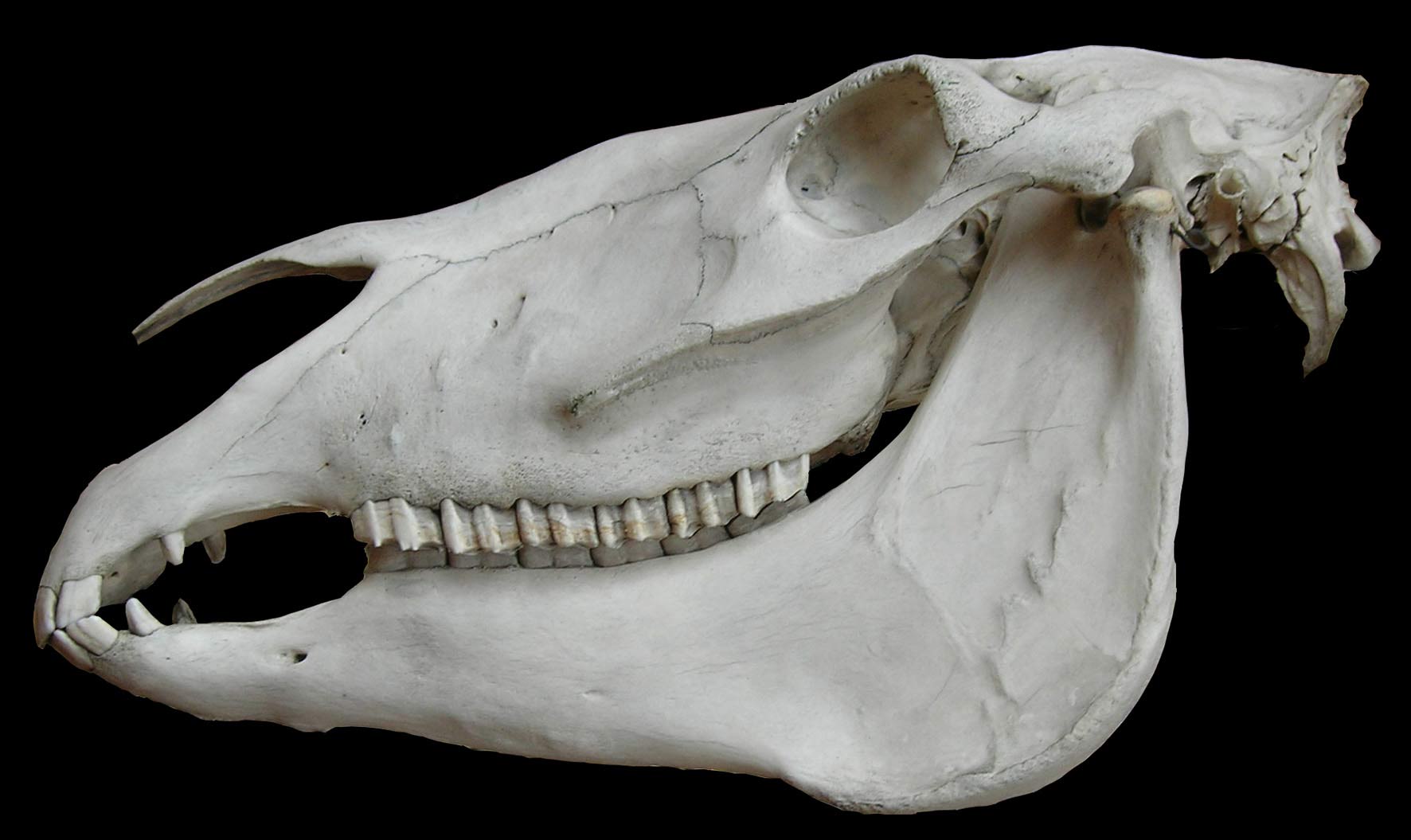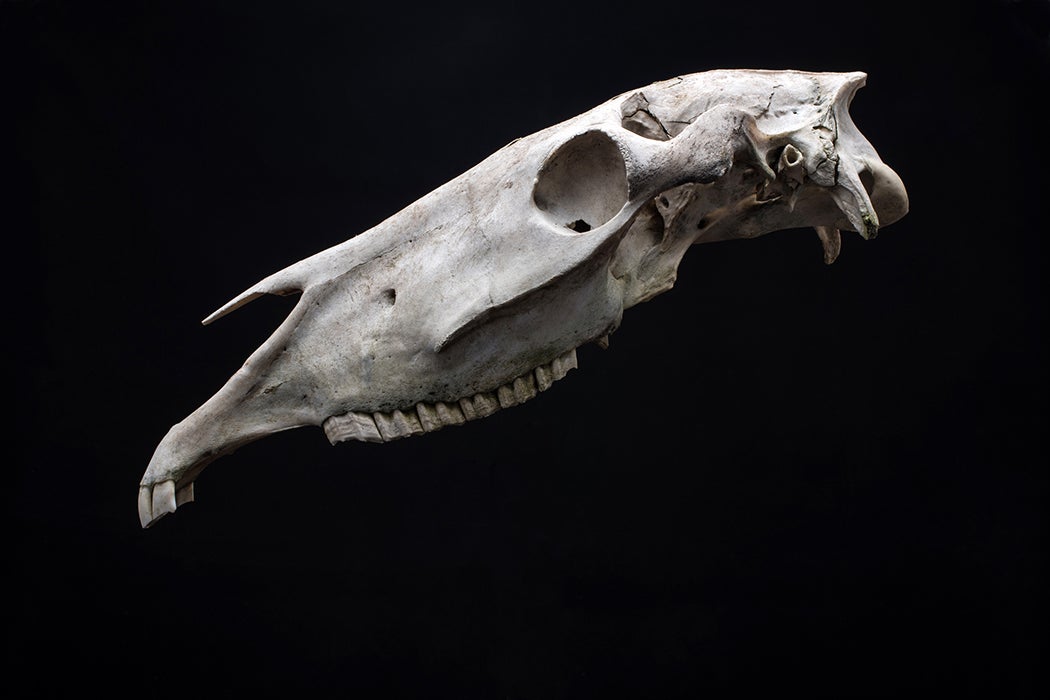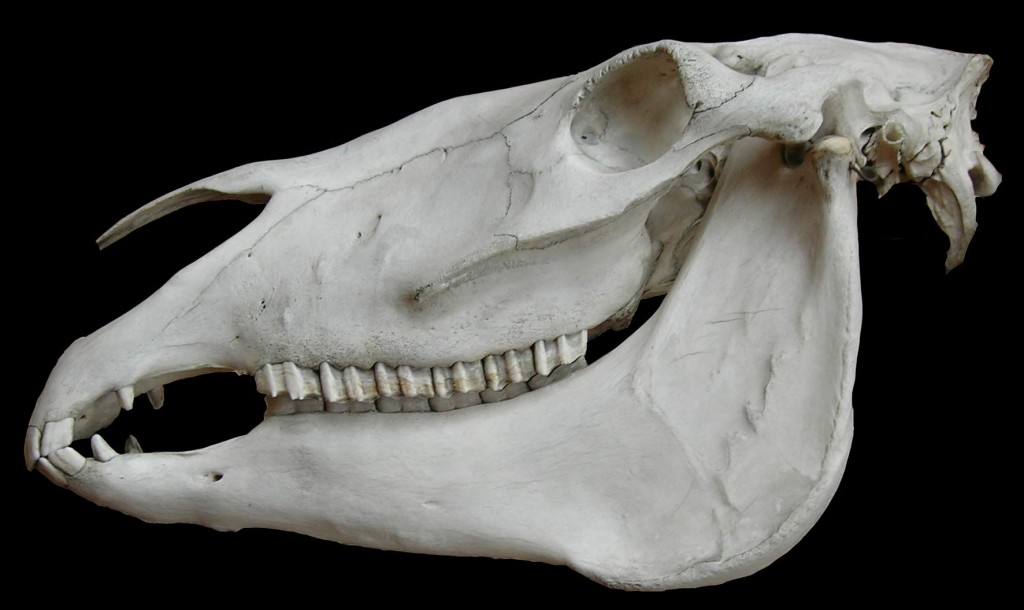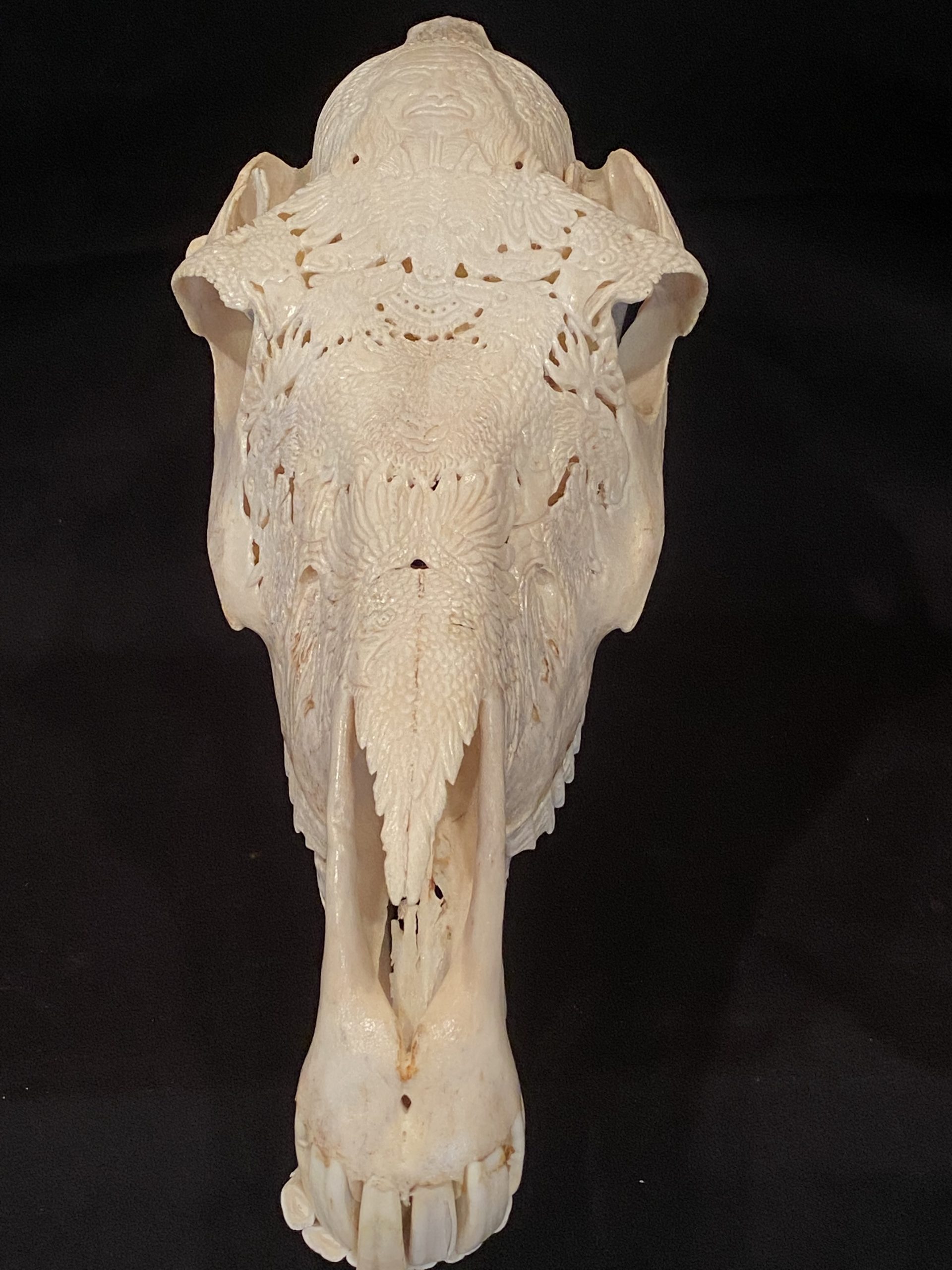
Introduction
A horse skull is the bony structure that forms the head of a horse. It is made up of several bones, including the cranium, mandible, and various facial bones. The horse skull is an essential part of the horse's anatomy, providing protection for the brain and sensory organs, as well as support for the muscles involved in chewing and eating.
Structure and Function

The horse skull consists of several bones that are fused together to form a strong and rigid structure. The cranium, or braincase, surrounds and protects the horse's brain. It is made up of several flat bones that are firmly joined together. The cranium also provides attachment points for muscles involved in chewing and head movement.
The mandible, or lower jawbone, is the only movable bone in the horse skull. It articulates with the cranium through the temporomandibular joint, allowing the horse to open and close its mouth for eating and other activities. The mandible also houses the horse's teeth, which are essential for chewing and grinding food.
In addition to the cranium and mandible, the horse skull contains various facial bones, including the nasal bones, maxilla, and zygomatic bones. These bones give shape to the horse's face and provide attachment points for the muscles involved in facial expressions and chewing.
Evolutionary Adaptations

The horse skull has undergone significant evolutionary adaptations over millions of years. As horses evolved from small, multi-toed creatures to the single-toed animals we know today, their skulls changed to accommodate their changing diet and lifestyle.
One notable adaptation is the elongation of the horse's skull. Early horse ancestors had short, broad skulls suited for browsing on leaves and soft vegetation. As horses began to rely more on grazing grasses, their skulls elongated to accommodate the longer and tougher grasses. This elongation allowed for a more efficient and powerful bite, as well as improved jaw movement for grinding tough plant material.
Another adaptation is the reduction in the number of teeth. Early horse ancestors had more teeth, including several premolars and molars. As horses shifted to a diet of tough grasses, their teeth became larger and more specialized for grinding. This led to the reduction in the number of teeth, with modern horses typically having between 36 and 44 teeth.
Significance in Paleontology

The study of horse skulls has played a crucial role in paleontology. Fossilized horse skulls have provided scientists with valuable insights into the evolution and development of horses over millions of years.
By examining the size, shape, and structure of horse skulls from different time periods, paleontologists have been able to trace the evolutionary history of horses. They have identified distinct features and changes in horse skulls that correspond to different stages of horse evolution, from the small, multi-toed ancestors to the large, single-toed modern horses.
Horse skulls have also provided valuable information about the diet and feeding habits of ancient horses. By analyzing the wear patterns on fossilized teeth and studying the structure of the skull, scientists can make inferences about the types of plants horses ate and how they processed their food.
Conclusion
The horse skull is a remarkable structure that has evolved over millions of years to support the unique lifestyle and dietary needs of horses. Its intricate design not only protects the horse's brain and sensory organs but also allows for efficient chewing and grinding of tough plant material. The study of horse skulls has provided invaluable insights into the evolutionary history of horses and their ancient ancestors. By examining fossilized horse skulls, scientists have been able to piece together the story of horse evolution and gain a deeper understanding of these magnificent animals.